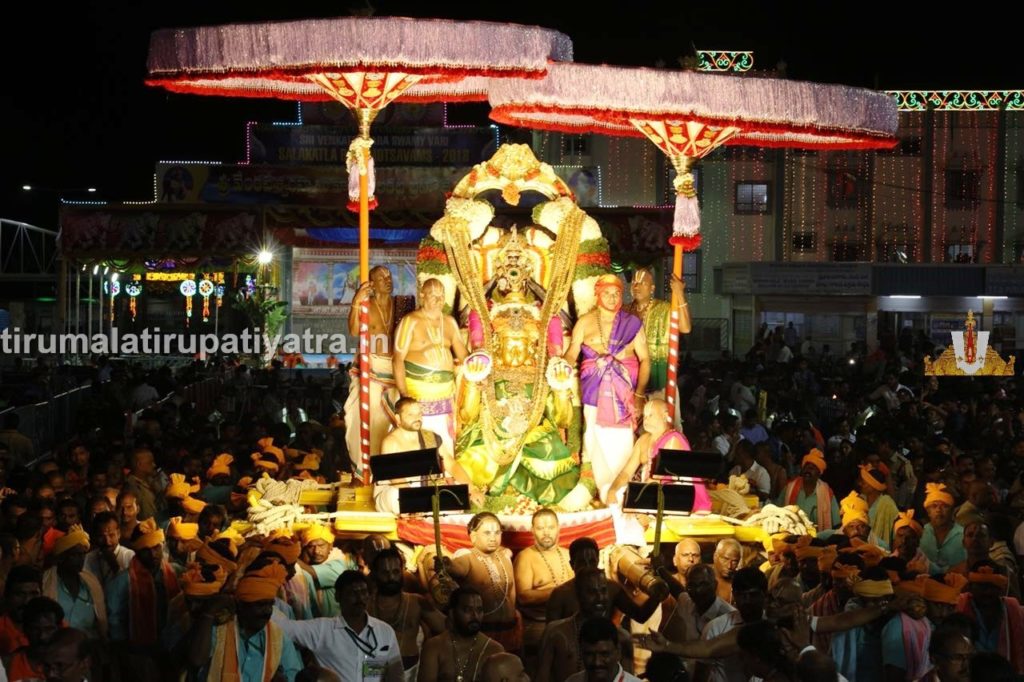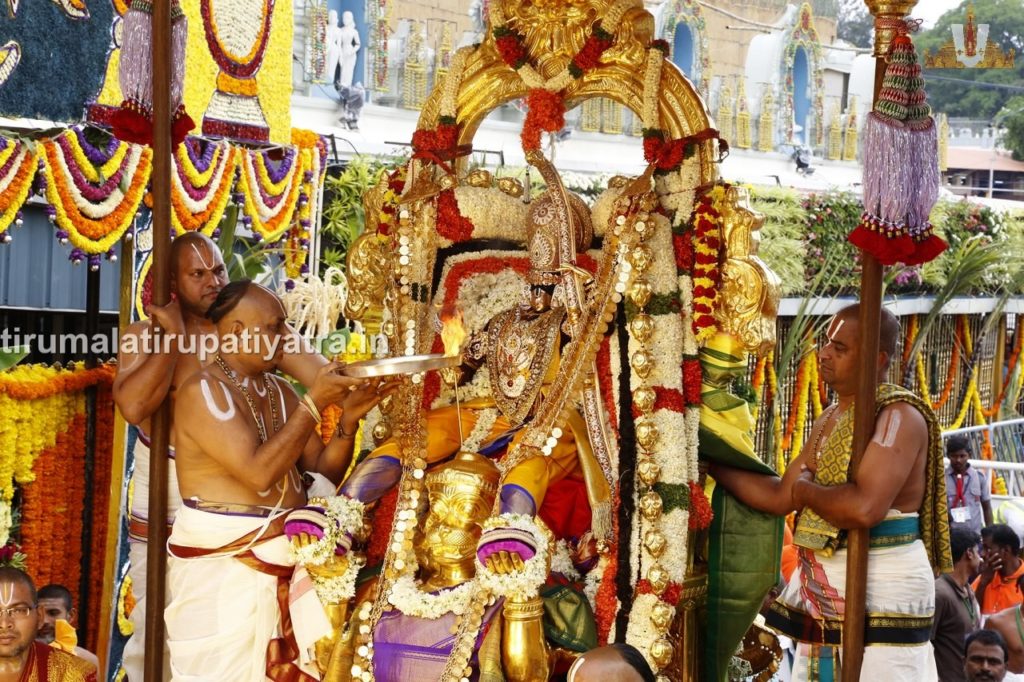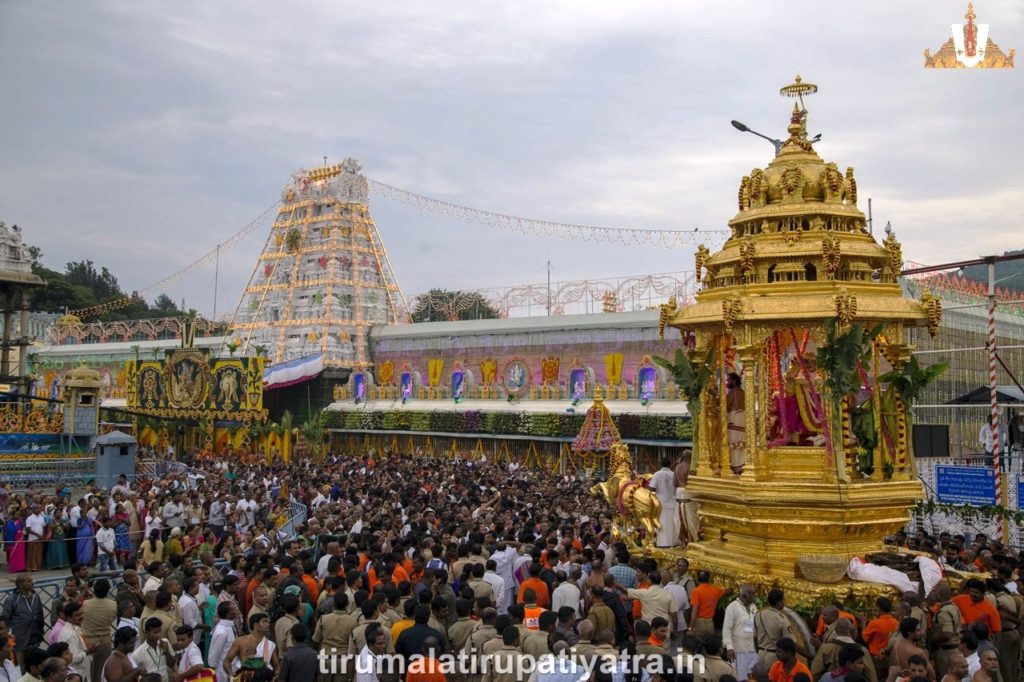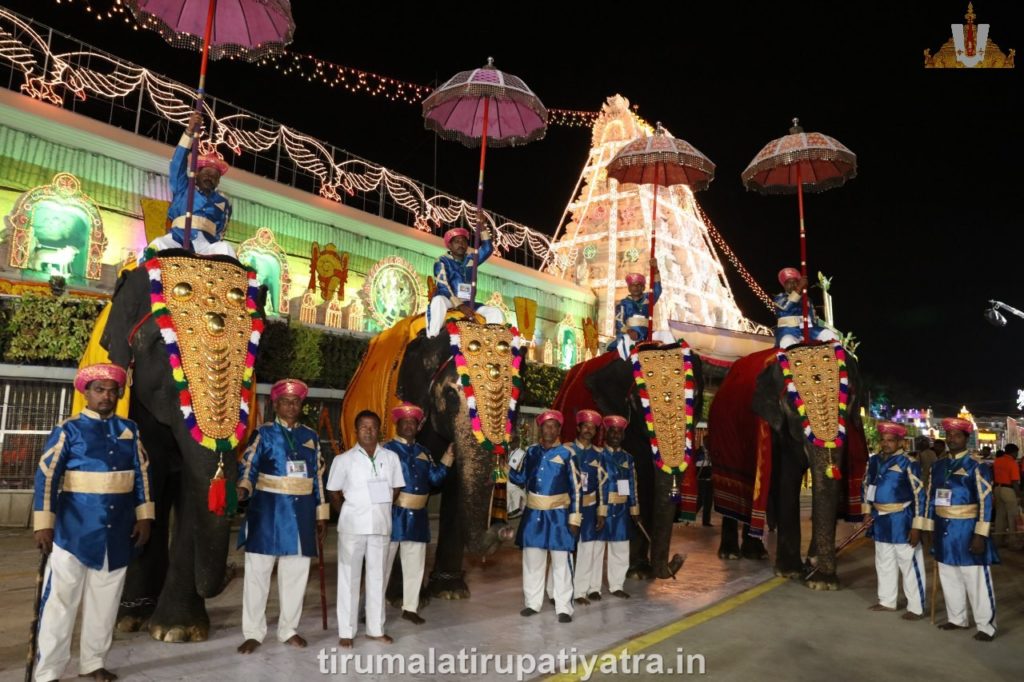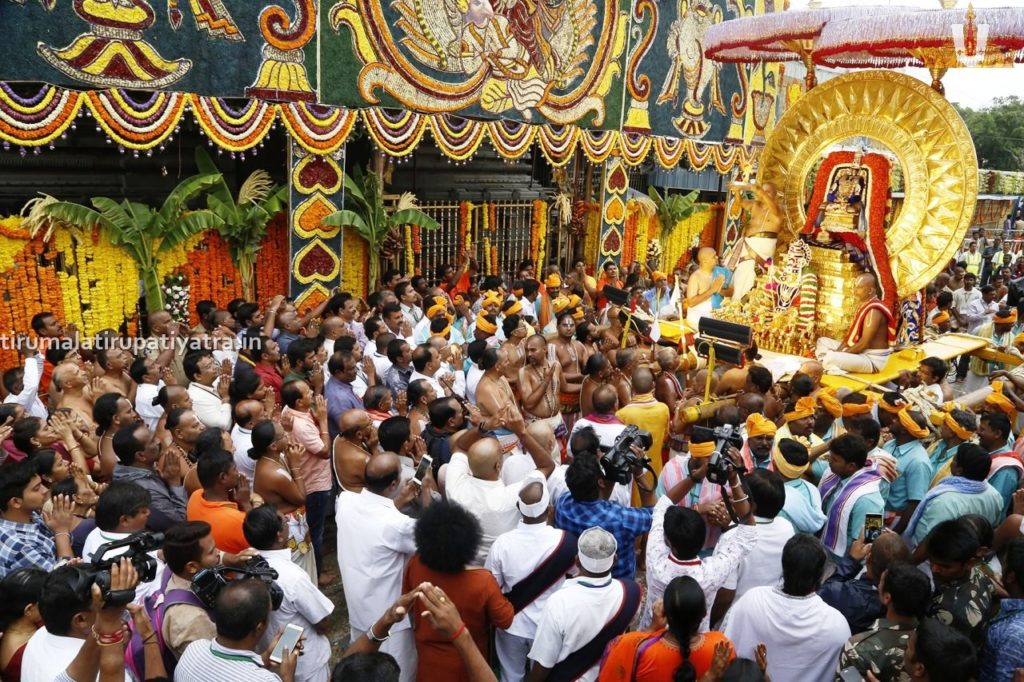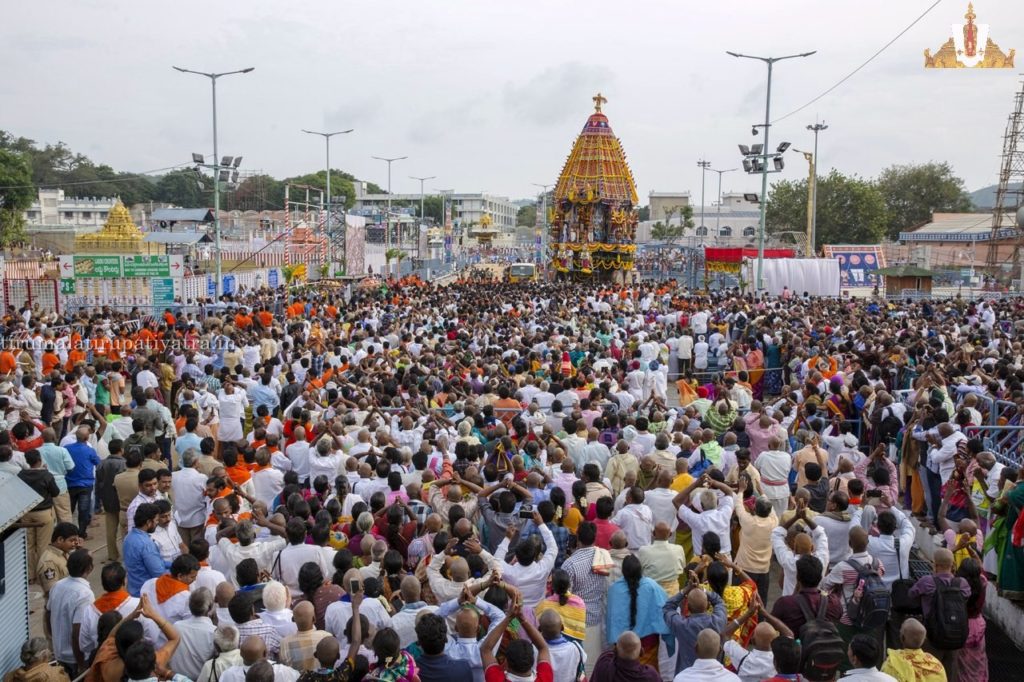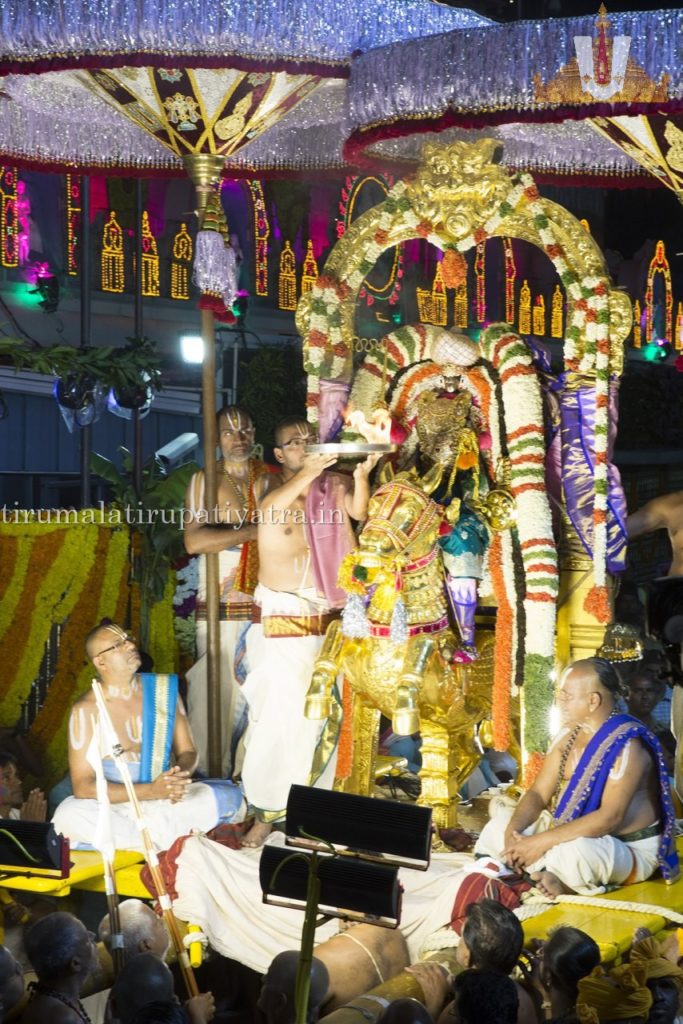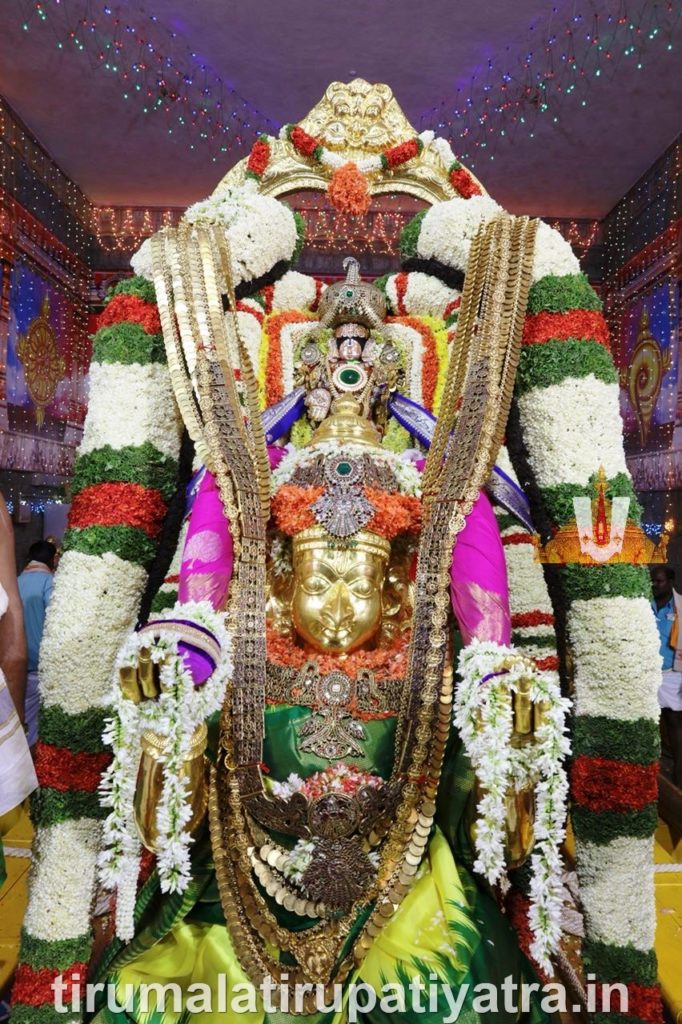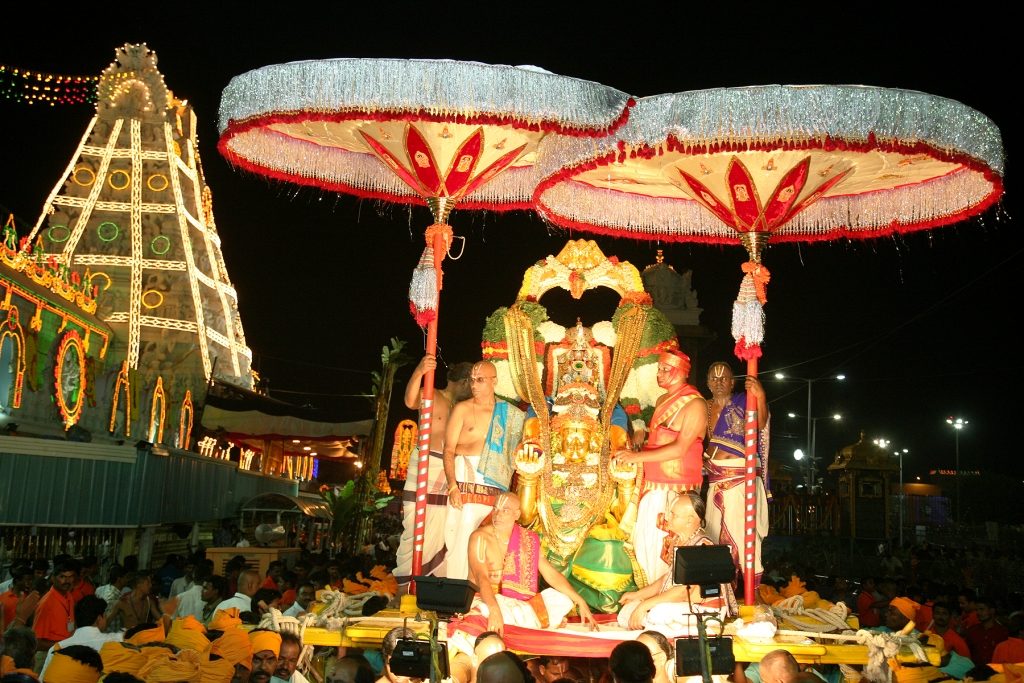There is one ceremony or the other almost daily for Lord Venkateswara manifest on Tirumala. Different ceremonies are conducted on a grand scale for the Lord with different time frames— daily, fortnightly, monthly, and yearly. Of them, special mention may be made of annual Brahmotsavas. Devotees go on raptures witnessing the Lord on different carriages Read More
Tag: Brahmotsavam
Although many utsavas are conducted for the Lord throughout the year, the Brahmotsavams which take place for nine days a year assume greatest prominence in the history of Tirumala.
Hanumantha Vahanam 2018
There is one ceremony or the other almost daily for Lord Venkateswara manifest on Tirumala. Different ceremonies are conducted on a grand scale for the Lord with different time frames— daily, fortnightly, monthly, and yearly. Of them, special mention may be made of annual Brahmotsavas. Devotees go on raptures witnessing the Lord on different carriages Read More
Golden Chariot 2018
There is one ceremony or the other almost daily for Lord Venkateswara manifest on Tirumala. Different ceremonies are conducted on a grand scale for the Lord with different time frames— daily, fortnightly, monthly, and yearly. Of them, special mention may be made of annual Brahmotsavas. Devotees go on raptures witnessing the Lord on different carriages Read More
Gaja Vahana Seva 2018
Gaja Vahana Seva There is one ceremony or the other almost daily for Lord Venkateswara manifest on Tirumala. Different ceremonies are conducted on a grand scale for the Lord with different time frames— daily, fortnightly, monthly, and yearly. Of them, special mention may be made of annual Brahmotsavas. Devotees go on raptures witnessing the Lord Read More
Surya Prabha Vahanam 2018
Surya Prabha Vahanam There is one ceremony or the other almost daily for Lord Venkateswara manifest on Tirumala. Different ceremonies are conducted on a grand scale for the Lord with different time frames— daily, fortnightly, monthly, and yearly. Of them, special mention may be made of annual Brahmotsavas. Devotees go on raptures witnessing the Lord Read More
Chandra Prabha Vahanam 2018
Chandra Prabha Vahanam There is one ceremony or the other almost daily for Lord Venkateswara manifest on Tirumala. Different ceremonies are conducted on a grand scale for the Lord with different time frames— daily, fortnightly, monthly, and yearly. Of them, special mention may be made of annual Brahmotsavas. Devotees go on raptures witnessing the Lord Read More
Rathotsavam – Car Festival 2018
Rathotsavam There is one ceremony or the other almost daily for Lord Venkateswara manifest on Tirumala. Different ceremonies are conducted on a grand scale for the Lord with different time frames— daily, fortnightly, monthly, and yearly. Of them, special mention may be made of annual Brahmotsavas. Devotees go on raptures witnessing the Lord on different Read More
Aswa Vahana Seva 2018
There is one ceremony or the other almost daily for Lord Venkateswara manifest on Tirumala. Different ceremonies are conducted on a grand scale for the Lord with different time frames— daily, fortnightly, monthly, and yearly. Of them, special mention may be made of annual Brahmotsavas. Devotees go on raptures witnessing the Lord on different carriages Read More
BRAHMOTSAVAMS IN TIRUMALA
“Venkatadri Samam sthanam Brahmande Nasthi Kinchana” Annual Brahmotsavams There is no sacred place in the Brahmanda like ‘Venkatadri’. Out of all pilgrim centers throughout the world, ‘Venkatadri’ is being considered as a unique place. Since the advent of Lord Venkateswara as ‘Swayambhu’ in Tirumala, the ‘Annual Brahmotsavams’ are being celebrated for nine days in the Read More
Importance of Brahmotsavams
Brahmotsavam God Srinivasa was the cynosure of every eye, strolling on the streets of Tirumala with Sridevi and Bhudevi. One day he would ride a horse, comparable to Ucchaisrava, on another on an elephant like Airavata, on yet another day Adisesha or Garuda, the personification of the Vedas. He showered his blessings on all the Read More
